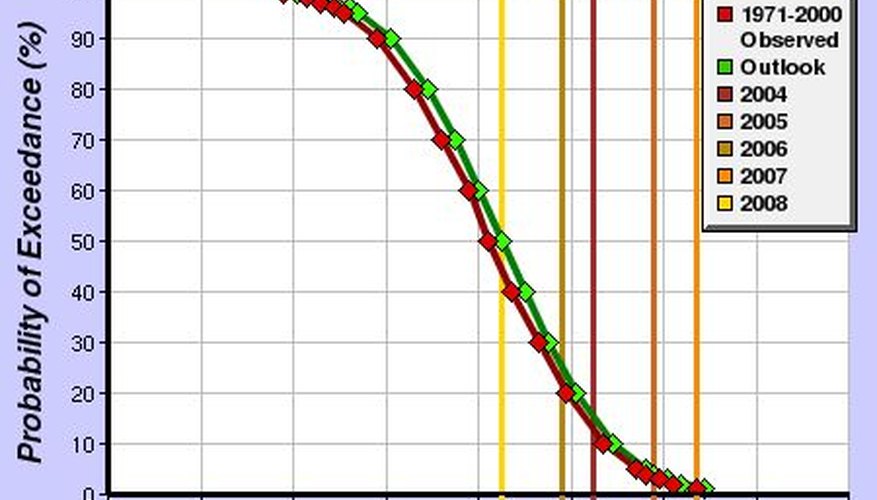Exceedance probability is the probability that a certain value is going to be exceeded. For example, if you have data regarding the average cost of bread over a 10-year-span, exceedance probability calculations would allow you to determine the odds that bread will cost more than this average when you actually go to the store. Exceedance probability is used frequently in calculating the behaviour of bodies of water. The reason for this is that it helps predict the probability that flooding might occur and therefore assists in the designs of bridges, dams and sewers.
- Exceedance probability is the probability that a certain value is going to be exceeded.
- For example, if you have data regarding the average cost of bread over a 10-year-span, exceedance probability calculations would allow you to determine the odds that bread will cost more than this average when you actually go to the store.
Arrange the values that you have from greatest to least. For example, if you are trying to calculate exceedance probability for the peak flow of a river, you might have annual data regarding the water level. If this were the case, then each year would most likely have a different peak flow level. What you would need to do with this data is arrange these peak flow levels from greatest to least.
Add up the total number of values. Using our example from Step 1, this would be equivalent to the number of years for which we have data since each year constitutes a single value.
Plug the total number of values into the formula: Rank / (Total Number of Values+1) = Exceedance Probability. For example, if you found in the previous step that you had 9 values, then you would insert this number into the formula making it: Rank / (9+1) = Exceedance Probability.
- Add up the total number of values.
- Plug the total number of values into the formula: Rank / (Total Number of Values+1) = Exceedance Probability.
Number each individual value, according to its rank in the arrangement. The greatest value should be ranked number one, the second greatest number two, and so on, until each value has a rank.
Decide which value you want to use as the standard. The standard value is the value for which you want to calculate the exceedance probability.
Take the rank of this standard value and plug it into the formula. For example, if we wanted to use the fifth largest value as the standard value in our calculation, we would plug the number "5" into our formula of (Rank / Total Number of Values + 1) = Exceedance Probability. Using our example from Step 2, this would give us 5 / (9 + 1) = Exceedance Probability.
- Take the rank of this standard value and plug it into the formula.
- Using our example from Step 2, this would give us 5 / (9 + 1) = Exceedance Probability.
Solve for exceedance probability. With all the variables in place, perform the addition and division functions required of the formula. Using our example, this would give us 5 / (9 + 1) = 5 / 10 = 0.50. The solution is the exceedance probability of our standard value expressed as a per cent, with 1.00 being equivalent to a 100 per cent probability.
TIP
Data representing a longer period of time will result in more reliable calculations.
